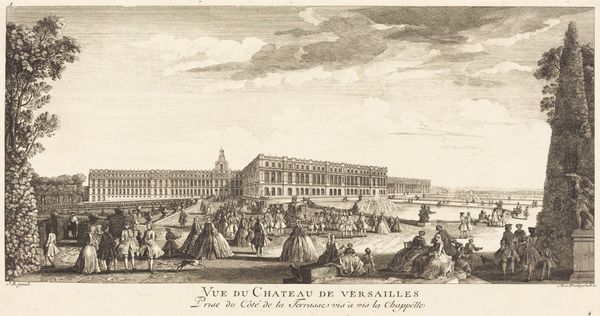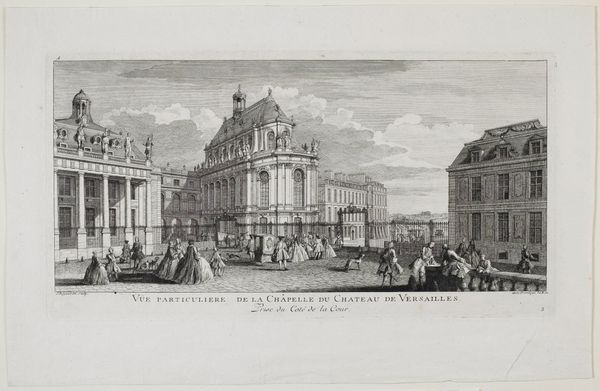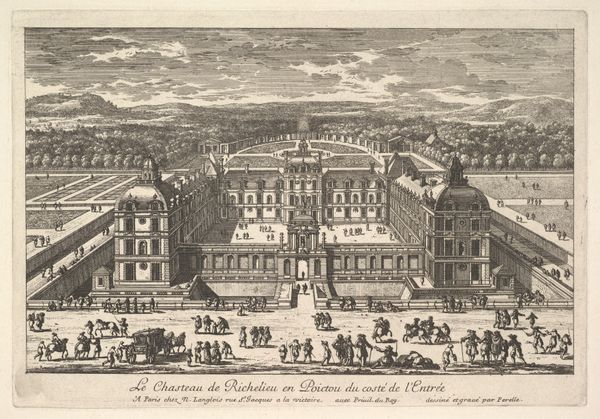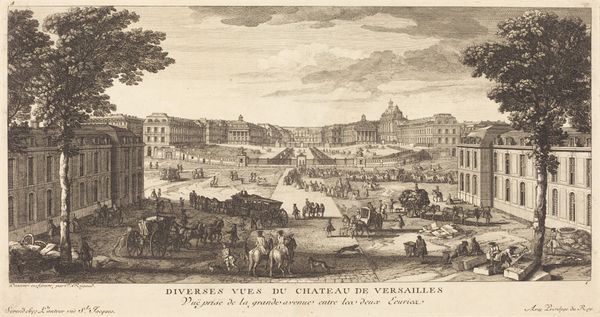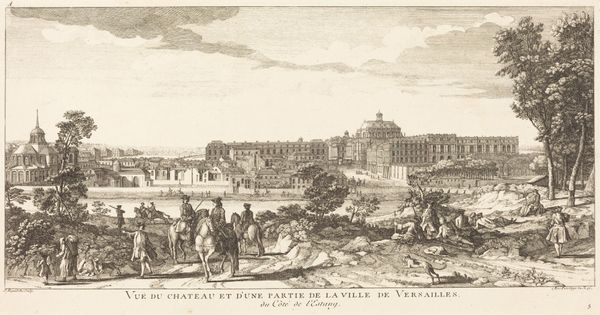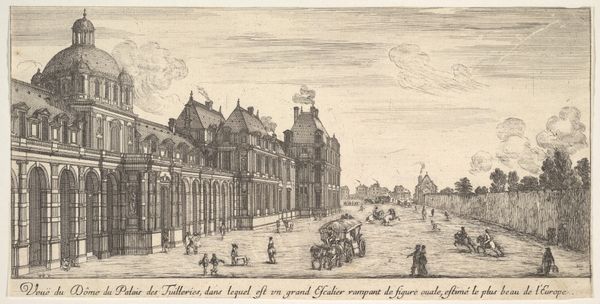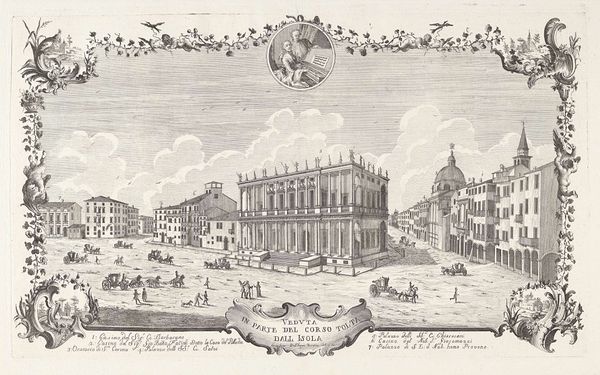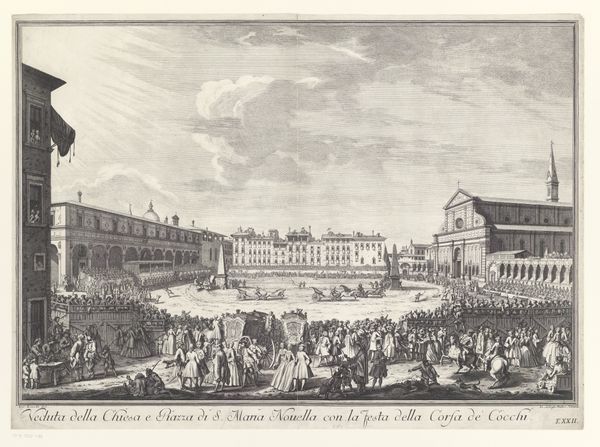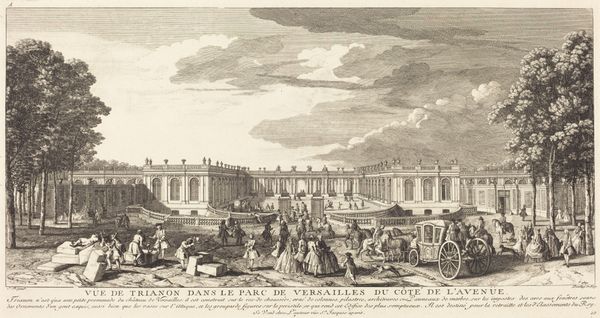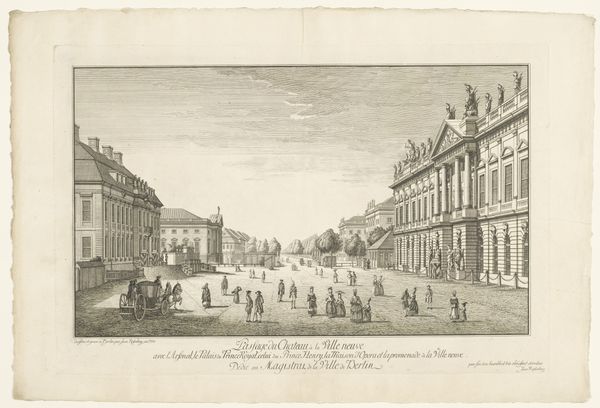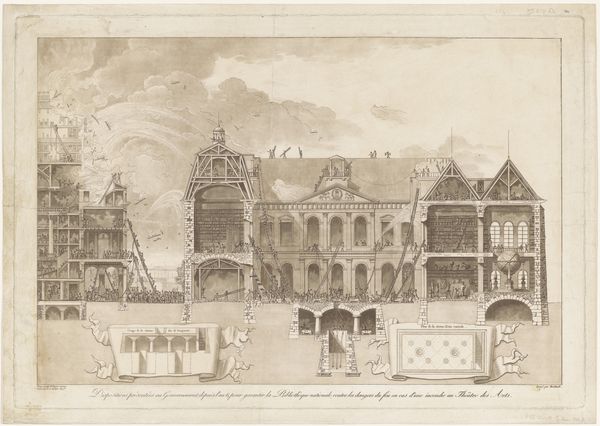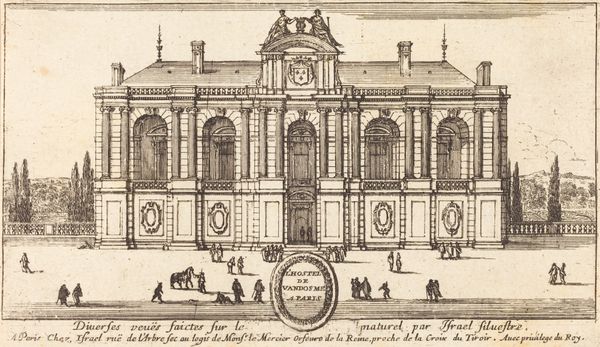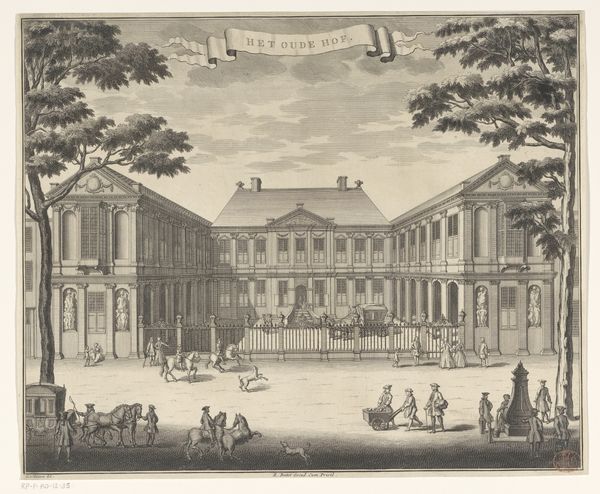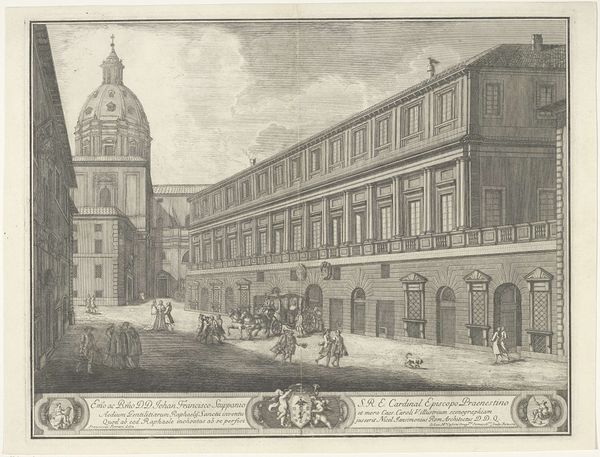
print, engraving, architecture
#
baroque
# print
#
cityscape
#
engraving
#
architecture
Copyright: National Gallery of Art: CC0 1.0
Curator: Jean-Baptiste Rigaud offers us a slice of life at the Château de Versailles with "Vue Particuliere de la Chapelle du Chateau de Versailles." It's an engraving showcasing the palace chapel. Editor: Immediately, I'm struck by how staged everything feels. It's less a candid depiction, more a careful performance of wealth and status rendered in a rather muted palette. Curator: Indeed. Rigaud captures not just the architecture but also the performance of power that Versailles embodied. Think about the social structures represented; those gathered are not just present but also fulfilling their designated roles in this theatre of court life. Editor: I'm especially interested in the perspective. By focusing on the courtyard side, what statements is Rigaud trying to make about class? There is such visible, deliberate luxury present, while there is significant turmoil going on elsewhere. Curator: It is paramount to examine the architectural details to understand its cultural weight. Baroque architecture like this projects the power of the monarchy, using size, ornamentation, and imposing design to evoke deference. It served as both residence and stage for elaborate rituals, solidifying the King's authority. This was a symbol of state. Editor: Do you think its important to recognize the work of a single artist here or consider a possible shop, since a large workshop usually took responsiblity? What is lost if we focus on "Jean-Baptiste Rigaud"? Curator: Considering this print alongside historical documents, court records, and contemporary social critiques of Versailles is very important in viewing art in historical context, and for this the role of the artisan workshop versus sole-artist-production is important. Who made the conscious decision and why becomes interesting. It allows a multifaceted interpretation of Rigaud's print within the broader political and socio-economic conditions. Editor: Thanks! Considering this particular viewpoint highlights wealth in relation to its population raises critical points, even to contemporary discussion on excess and the unequal distribution of resources. Curator: Precisely! Examining art through history allows an assessment of shifting standards as much as how to improve for future creative social equality.
Comments
No comments
Be the first to comment and join the conversation on the ultimate creative platform.
